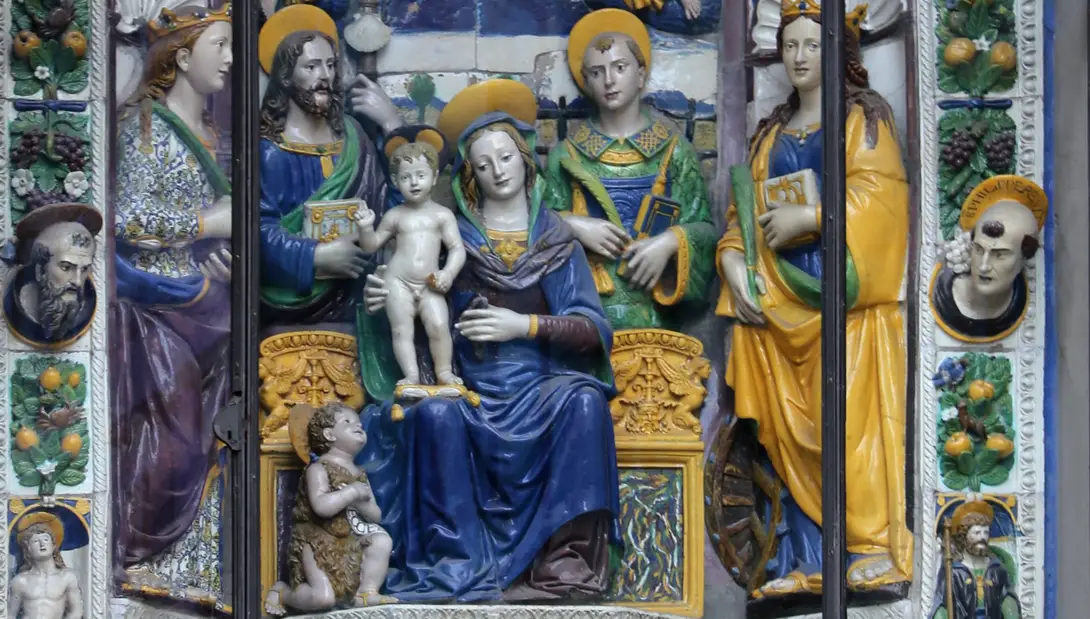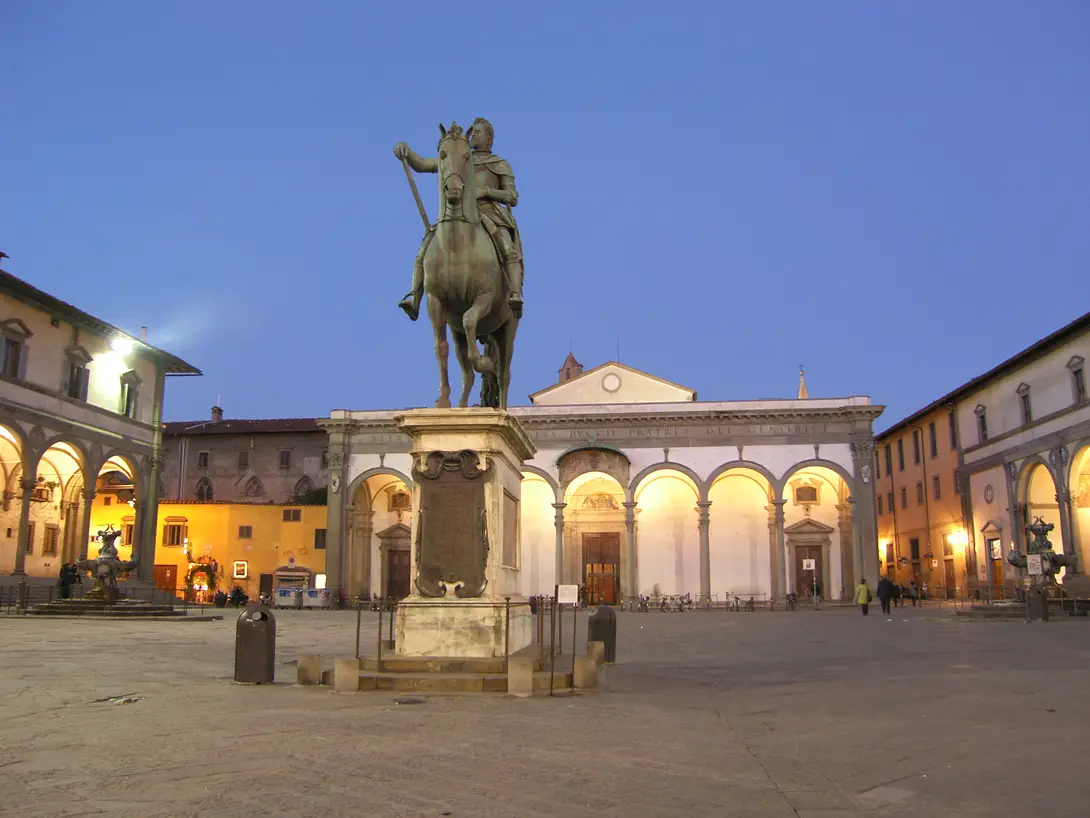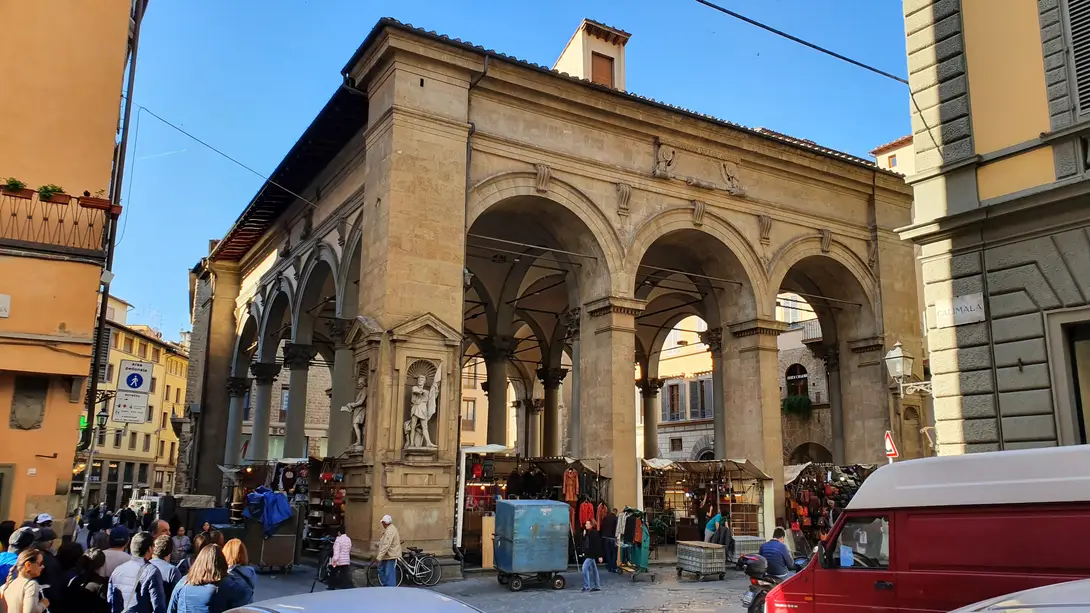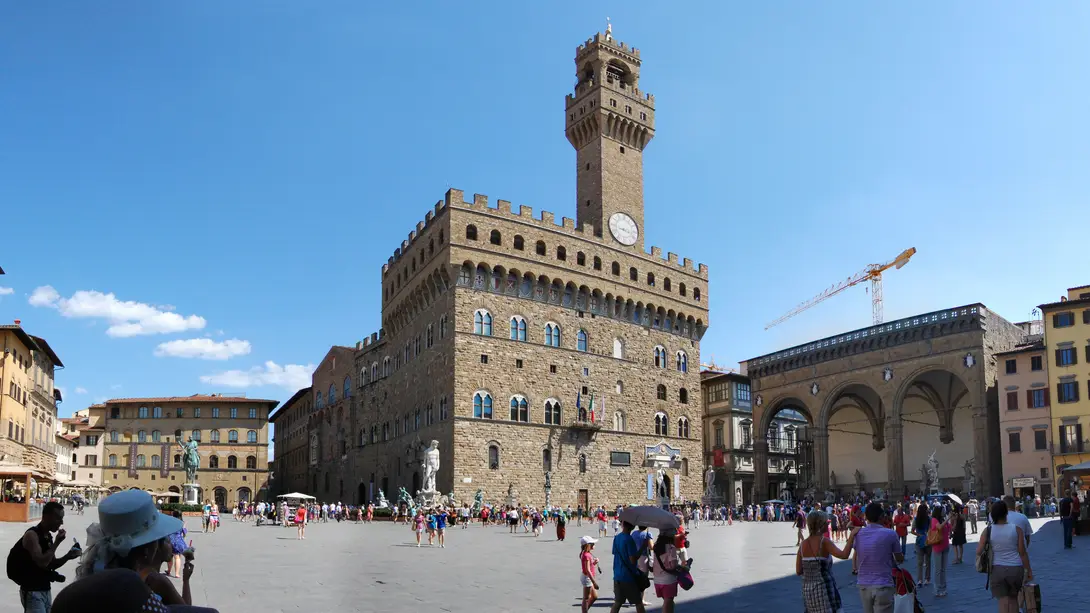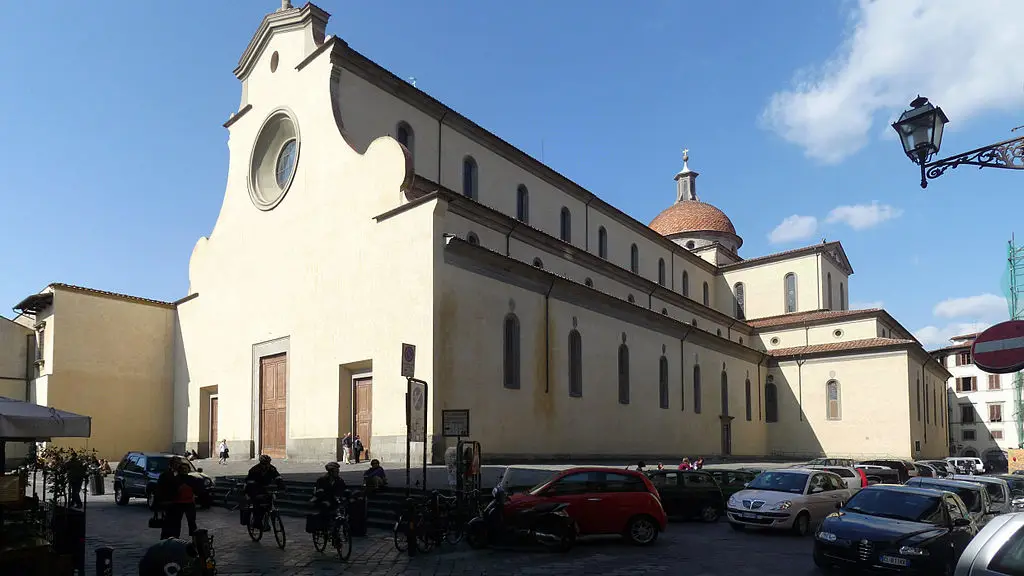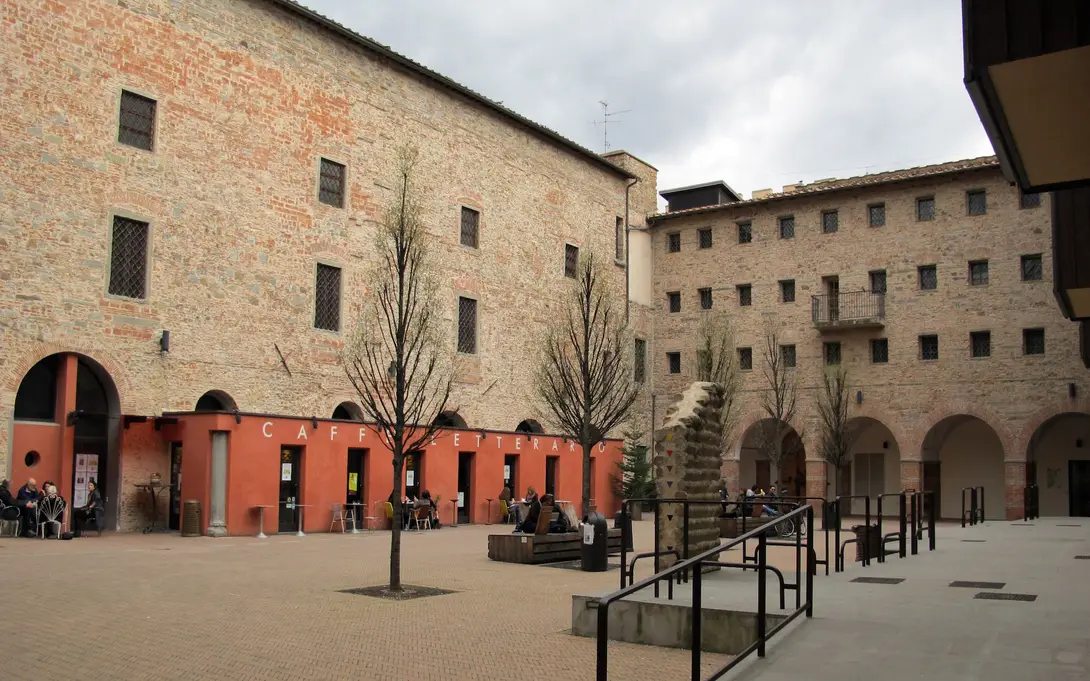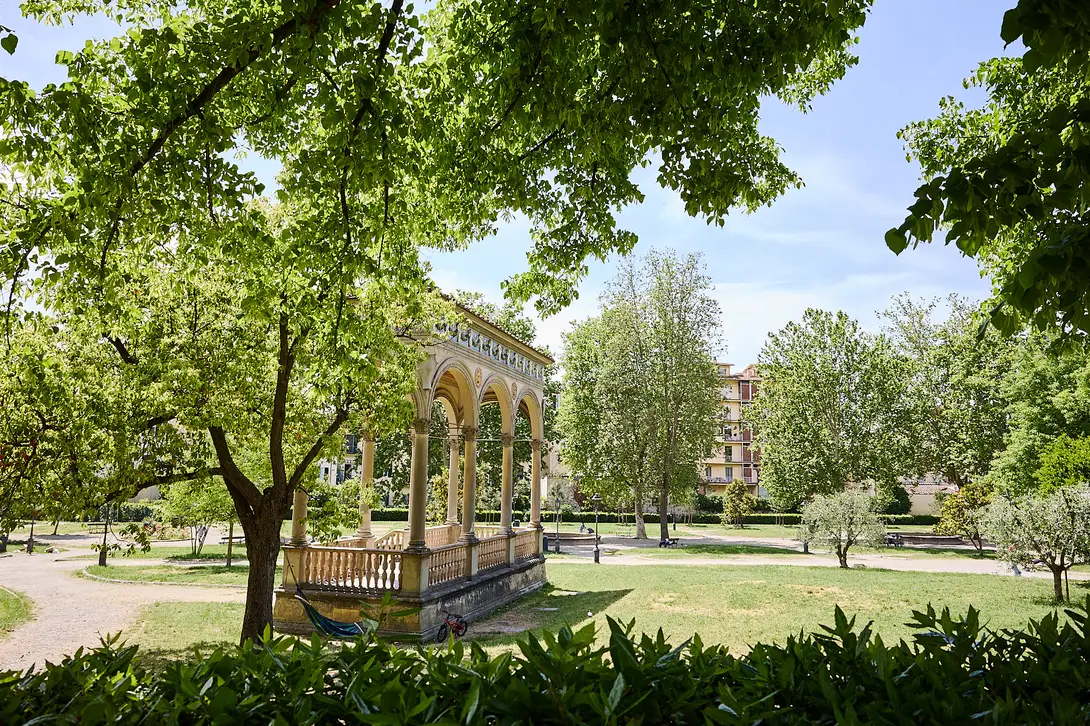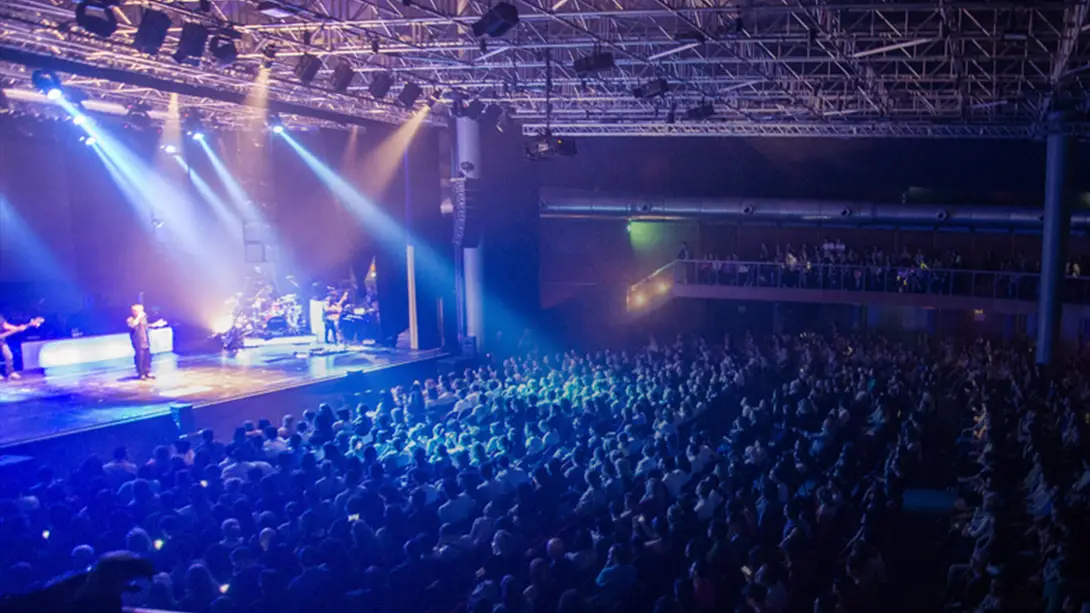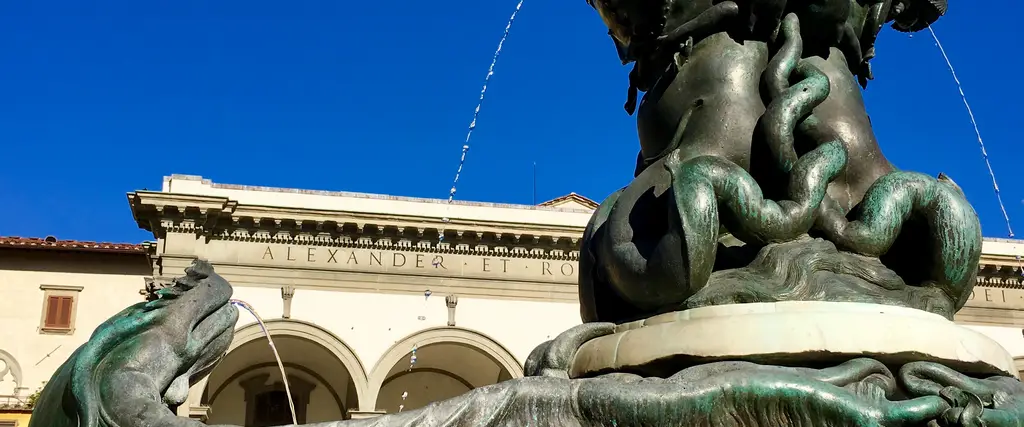
The route of fountains
Following a route on the subject of water is a theme that can seem peculiar in a city so rich in art, like Florence.
Nevertheless fountains are, besides a useful tool for citizens and tourists, an important means of urban decor if not works of art themselves.
So follow us on this extra fresh and artistic route to discover some of the city's fountains.
The street is busy and a little chaotic, and the Fonticine (small founts) on via Nazionale may go unnoticed. The fountain is imposing like a tabernacle and houses a glazed terracotta by Giovanni della Robbia, portraying the Madonna with child, San Giovannino and saints. At the base there are 7 little heads of putti, the small founts indeed, that throw water in a basin.
Some imaginary and terrible sea monsters tower over the base of the two twin fountains of piazza Santissima Annunziata. They are called Fontane del Cacciucco (fountains of the fish stew) and were made by Pietro Tacca between 1627 and 1629.
It is one of the city's landmarks: we are talking about the Porcellino (piglet), in the fountain of the market loggia of the same name. It was always Pietro Tacca who created the bronze statue - the original is kept in the Museo Bardini - on a copy of a Roman marble statue. Beloved by tourists that touch its muzzle, all polished and shiny, the piglet is actually a wild boar.
Not far, on piazza Signoria, another symbol of Florence: the grand, monumental Fontana del Nettuno (fountain of Neptune) or "del Biancone". The big statue made with marble of the Apuan Alps portraying the sea god was created by Bartolomeo Ammannati in 1560: its iconography is reminiscent of Cosimo I's face. The fountain on the square is also populated by steeds, Nereids, satyrs and tritons, all placed in an octagonal tank.
Crossing the Arno river on the Ponte a Santa Trinita bridge you find a bizarre fountain, located on the corner between borgo San Jacopo and via dello Sprone: it is indeed called fontana dello Sprone (fountain of the acute angle) and depicts a grotesque marble mask that spits water in a welcoming tank; all of this is the work of Bernardo Buontalenti and it is above all the enhancement of the corner position that makes us include it in this - short - list.
Now that we are in the Oltrarno neighbourhood, let's go to a square, unusual for Florence, with a fount in the middle and surrounded by trees: the fountain of piazza Santo Spirito served as a water supply for the popular neighbourhood. The 17th-century fountain is octagonal in shape.
Among the more contemporary works some recommendations, that can be extended to many other situations found in the various neighbourhoods of Florence.
We are on the edge of the historic centre, in what was the prison of Florence: at the Murate, on piazza Madonna della Neve, you can see one of the newest and oddest fountains: short and linear, it portrays the course of the Arno river in Florence and it is made of pietra serena and ceramic stoneware.
Echoing Gaudì's masterpieces is the fontana del Dragone, found in the panoramic Orto del Parnaso, accessible from via Trento with a breathtaking view of Florence. The fountain portrays a dragon, made with a mosaic of recycled materials by architect Dezzi Bardeschi; the work dates back to 1990.
On the other side of Florence, near the TuscanyHall theatre, is the adorable and unlucky statue of the rain man, by Jean Michel Folon. Poetic, as all the works of the Belgian artist are, the bronze sculpture where water itself acts as an umbrella for the stern gentleman is located in a roundabout on a very busy avenue.
Comune di Firenze
Les lieux
Étapes
Tabernacolo delle Fonticine
This imposive glazed terracotta tabernacle was done by Giovanni della Robbia in 1522.
In the centre of the monumental composition stands the Madonna with Child, Young Saint John and four saints, above them there is God, the Holy Spirit and angels. Other angels heads emerge from the frame around, decorated with leaves and fruits.
The tabernacle takes its name from the seven little fountains at the base, shaped like little cherubs heads on a bas-relief over the marble basin.
Originally, the tabernacle was located along via Santa Caterina d'Alessandria and was dismantled and rebuilt in this position in middle of the XIX century, when via Nazionale was enlarged.
Piazza Santissima Annunziata
The Piazza della Santissima Annunziata is characterised by the Renaissance aspect which Brunelleschi conferred in it with the construction of the colonnade for the Ospedale degli Innocenti (Museum). The elegant harmony of the hospital building conditions the entire square, and the colonnade itself is later repeated in the Loggiato dei Serviti, and in the façade of the church. As a result Brunelleschi’s design assumes a certain urbanistic importance, underlined by the fact that this square is one of the few points of the city from which one can see the cupola of the Cathedral, the monumental symbol of the fifteenth century city.
The square has also always played a significant role in the religious, cultural and economic life of Florence, which is closely related to the religious institute of the Servants of Mary. In fact the presence of an image of the Annunciation which is believed to be miraculous has made the church of Santissima Annunziataan important centre of devotion, and a destination for pilgrimages and processions. As well as this, the fact that in Florence the feast of the Annunciation (25 March) coincided up until 1750 with the start of the new civil year, made the square the obvious choice for the celebration of this holiday which was both civic and religious.
The square is dominated in the center by the equestrian monument of Ferdinando I de' Medici, Grand Duke of Tuscany, by Giambologna and finished by his pupil Pietro Tacca, who was also responsible for the two side fountains (1629) depicting sea monsters. Also on the square, at the corner of the church facade, is the National Archaeological Museum of Florence, one of the most important in Italy, with valuable collections of Egyptian, Etruscan and Greco-Roman art.
This square also hosts one of the most typical traditions, theRificolona. This Florentine Feast is held every September 7th, the night before the Nativity of the Virgin Mary.
Mercato del Porcellino
There are three names by which this place is known: Loggia del Porcellino (from the famous bronze animal - actually not a piggy but a wild boar - a copy of the seventeenth-century original by Tacca in the Stefano Bardini Museum), Loggia del Mercato Nuovo ("the new market" to distinguish it from the old one, which was located in what is now Piazza della Repubblica) and the Straw Market (traditional Florentine straw hats were sold there starting from the 19th century).
The architectural structure, the work of Giovan Battista Del Tasso (1550), is decorated in the corner niches with three nineteenth-century sculptures representing illustrious men from Florentine history: Michele di Lando, protagonist of the famous Ciompi Riots (the "minor" wool workers) of 1378; Giovanni Villani, well-known Florentine historiographer of the fourteenth century; Bernardo Cennini, pioneer of Florentine typography.
In addition to being a place dedicated to military functions, it was originally the site of the silk and other precious fabrics market. On the floor, in the center of the loggia, there is the so-called Scandal Stone, where insolvent debtors and traders were punished.
Today the Loggia hosts a tourist market (one of the most visited markets of Florence) selling mostly leather goods and souvenirs.
Piazza della Signoria
The square came into being along with the Palazzo Vecchio between the thirteenth and fourteenth century, establishing itself from the first as an area dedicated to the civic life of the city. Inside the Palace, seat of the Municipality of Florence you can also visit the Archaeological area (remains of the Roman Theatre) and climb the Tower (amazing panorama). In the course of the fourteenth century it took one more or less its present dimensions, as a result of the demolition of numerous private buildings and of two churches, and of the construction of the Loggia della Signoria on the west side and the Tribunale della Mercanzia (Commercial Court, nowadays Gucci Garden) on the north-east. Later developments were mostly connected with the sculptural decorations culminating, during the epoch of the Grand Duke, in the transformation of the Loggia della Signoria into a kind of open-air museum. The construction of the Uffizi (the most visited pianting gallery in Italy) connected with Palazzo Vecchio, in the mid sixteenth-century created a further prospect towards the river. The square was not immune from the nineteenth century renewal of the old city centre, within the course of which various Neo-Renaissance style buildings were introduced.
Piazza della Signoria has always represented the political centre of Florence becoming, over the years, the key place for many events that have strongly affected the history of the City and the entire world. In front of the XVI century Fountain of Neptune , one of the most beatiful fountains of Florence, there is a plaque on the ground marking the exact point where Fra Girolamo Savonarola and his fellow monks were burned on May 23rd 1498. This tragic episode is being commemorated every year with the traditional ceremony of the Fiorita.
In addition to the famous sculptures preserved inside the Loggia dei Lanzi (primarily Benvenuto Cellini's Perseus and Giambologna's Rape of the Sabine Women), among those in front of Palazzo Vecchio we highlight: Michelangelo's David (copy, original in the Galleria dell' Accademia), the Marzocco and Judith and Holofernes by Donatello (copies, originals respectively in the Bargello and inside Palazzo Vecchio). The square is dominated by the equestrian monument of Cosimo I de' Medici, Grand Duke of Tuscany, a work by Giambologna.
Fontana di via dello Sprone
Fontana a mascherone realizzata dal Buontalenti.
Piazza Santo Spirito
The settlement of the Augustinian Hermits in an area of the Oltrarno (the area beyond the river Arno) included within the city walls of 1173 dates back to 1250 and is of fundamental importance for the entire neighborhood. In fact, during the 13th century, thanks also to the construction of three new bridges, the Oltrarno experienced a notable urban expansion which was organized around the two main religious centres: Santo Spirito and the Carmine churches
Starting from 1269 the Basilica of Santo Spiritowas rebuilt and enlarged with the economic participation of the Municipality and at the end of the century the square took shape. The architectural appearance of this urban space has, however, profoundly changed over time: the reconstruction of the church based on a design by Brunelleschi (who here, inside, reached the pinnacle of his artistic career), the expansion of the convent, the architectural renovation of some noble palaces, but above all the eighteenth-century plastering of the church facade create the face of one of the most characteristic, "popular" and lively squares in the city. Numerous fair-markets are also held here, including (every third Sunday of the month) the Fierucola.
On the left side of the facade there is the entrance to the Cenacolo di Santo Spirito (Salvatore Romano Foundation), a small-great museum.
Le Murate
In the former Florentine prison of the Murate, in the area between Santa Croce and the viali di circonvallazione (ring roads), an urban upgrading plan has been implemented on the basis of a project by architect Renzo Piano. The result of that has been the creation of a housing complex, two new squares (Piazza Madonna della Neve and Piazza delle Murate), a covered gallery where visitors can find art galleries, a book shop and the well-known Box Office, besides two popular bars, a pizzeria restaurant and a Literary Café.
Giardino dell'Orticoltura
In 1854 the "Società Toscana d'Orticultura" (Tuscan Society of Horticulture) was constituted. In the second half of the 19th century the garden got larger and Giacomo Roster designed the big tepidarium, inaugurated in 1880. The little loggia "Bondi" by the architect Castellucci was realized in 1911.
The Municipality of Florence bought the garden in 1930 and designated the area as a public garden. In 1990 the "snake" was completed with decorations of different materials following the project of Marco Dezzi Bardeschi.
Inside the garden there is also a playground for children.
Teatro Cartiere Carrara ex Tuscany Hall
The first season of the “Teatro Tenda” is dated 1978 and took place in the historical venue where the now called Tuscany Hall is situated today. In2002 the tensile structure was transformed into a permanent structure with 2300 seats, able to accommodate people for conferences, fairs, open competitions and food events. Many famous artists appeared on this stage: Patti Smith, Ligabue, Nick Cave, Sigur Ros, Moby, Muse, Simple Minds, Cesare Cremonini, Robert Plant, Joan Baez. The new structure, born in 2002, was called Saschall and since January 2019, Tuscany Hall. After other changes of sponsor, is now Teatro Cartiere Carrara.
